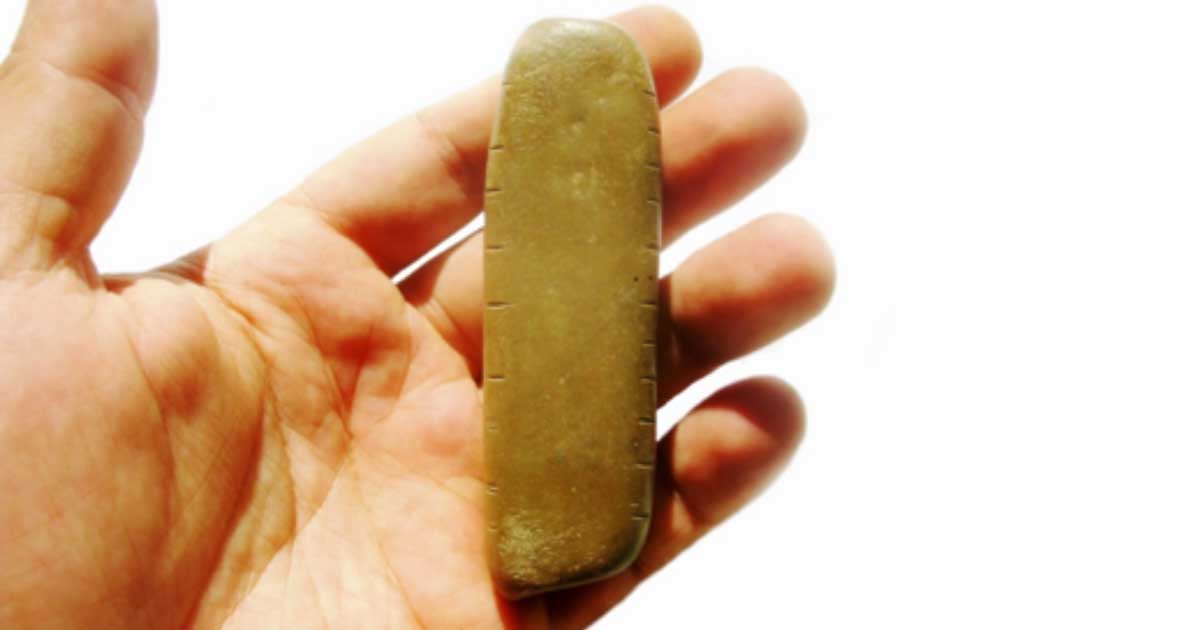10,000-Year-Old Engraved Stone Found to be World’s Oldest Lunar Calendar
A new study, coordinated by Sapienza, claims to have discovered the oldest lunar calendar in the world in a pebble that was carved during the Upper Paleolithic period.
The remarkable find has been announced by Flavio Altamura of the Department of Sciences of antiquity of Sapienza, in collaboration with the Archaeological Superintendence of Fine Arts and Landscape for the metropolitan area of Rome, the Province of Viterbo, and southern Etruria. The authorities have presented the results of their analysis conducted on the enigmatic stone - which has shown it to be decorated more than 10,000 years ago - making it the oldest known artifact of its type. The full report is published in the Journal of Archaeological Science: Reports.
Record in the Mountains
The find was made in 2007 on the top of Monte Alto, in the Alban Hills south of Rome. The artifact has been defined as a "notational" instrument and it represents one of the very rare Paleolithic finds for which scholars have speculated this use. The archaeologists are attracted by three series of short linear incisions, called "tacche", along three adjacent sides of the pebble. The mysterious signs comprise respectively seven, nine / ten and eleven notches, arranged in a regular and symmetrical manner, until the available space along each side is exhausted.
- Exploring Ancient Lunar Legends as Total Lunar Eclipse Will Create Rare 'Blood Moon'
- Moon Landing Conspiracy Theorists Biting Dust On the 50th Anniversary of First Lunar Mission
- Urnfield Vase Reveals 3,300 Year Old Lunar and Metaphysical Encoding
The complex system of incisions, their number (27 or 28) and their spatial distribution could indicate a counting system based on the cycle of the moon.

Incisions on the pebble, suggesting it may be a lunar calendar. (SAPIENZA, Università di Roma)
Flavio Altamura explains, “The investigations have revealed that the notches have been inscribed over time using multiple sharp stone tools, as if they were being used to count, calculate or store the record of some kind of information".
The fact that the engravings present the same number of days of the synodic or sidereal lunar month represents a unique case among the alleged objects interpreted as "lunar calendars", making the specimen of Monte Alto the oldest and most likely example of this category of artifacts in the prehistoric world.
Alban Hills Have a Long History of Human Inhabitation
In the earliest days, human settlement in the area was focused around Alban Hills’ lakes. Visit Alban Hills provides a concise explanation of the earliest human inhabitation of the area. The website states that “The fertile hills of this area have been populated by man ever since Prehistoric times. Neanderthal man settled here permanently between the modern centres of Castel Gandolfo and Albano, living off hunting wild boar, deer and Elephas antiqus (the straight-tusked elephant).”
In the Neolithic period the hills became a site for agriculture, art, and spirituality. Little villages eventually emerged, including the legendary Alba Longa (linked to Romulus and Remus and Aeneas) and Tusculum (with its connections to Odysseus and Aeneas). Later on, the Latini people resided in the region. And after that there were the Romans living there and calling the hill Albanus Mons.

Theater of Tusculum. (Public Domain)
More than a Lunar Calendar: A Tool With Many Uses
The discovery was as extraordinary as it was unexpected. In fact, the stone is characterized by a complex functional history: it was used first as a tool to chip and modify flint artifacts (i.e. as a striker), then it was used as a pestle to pulverize coloring substances, for example red ocher.
- Footprints on the Moon and Cemeteries on Mars: 50 Years Evidence of Human Activity In Space
- The Origin of Lunar New Year and the Legend of Nian
- The Mystery of the Stone Monuments in Northern Scotland: Domains of Ancient Lunar Astronomers?
From the petrographic analyses, the researchers also found the composition of the pebble, noting that this type of material (marly limestone) comes from geological sites that are kilometers from the place of discovery. The pebble was then transported for a long time before being lost, abandoned, or placed on the top of Monte Alto, a steep and isolated mountain relief.
Artists impression of the supposed calendar being used. (SAPIENZA, Università di Roma)
The find is therefore one of the first attempts in human history to understand and measure the passing of time and it provides new insight on the cognitive and mathematical abilities of prehistoric man. The artifact from Colli Albani, however primordial, can be considered the ancestor of the modern "table" calendar, and in a certain sense it marks the beginning of the "scientific" interest of our species with the moon. In the Paleolithic man took the first small step on the journey that led him, 10,000 years later, to conquer our satellite.
Top Image: The 10,000-year-old pebble which is believed to be the oldest lunar calendar in the world. Source: SAPIENZA, Università di Roma
This article was first published as a press release in Italian titled, ‘Il più antico calendario lunare in un ciottolo di 10.000 anni fa dei Castelli Romani’ and has been edited for style and length.
Source: Sapienza Università di Roma , July 23, 2019 ‘Il più antico calendario lunare in un ciottolo di 10.000 anni fa dei Castelli Romani’


















